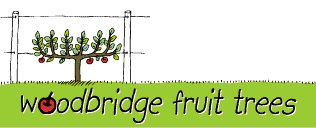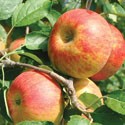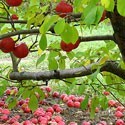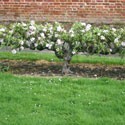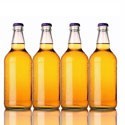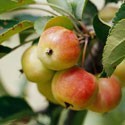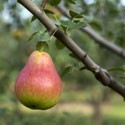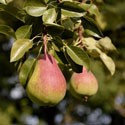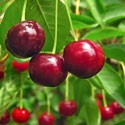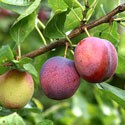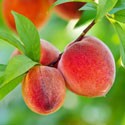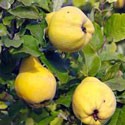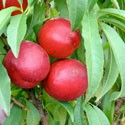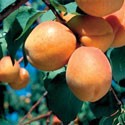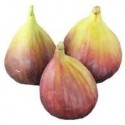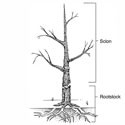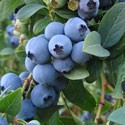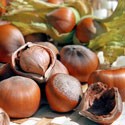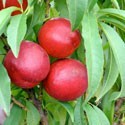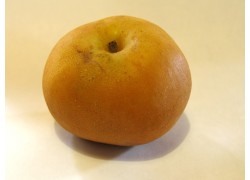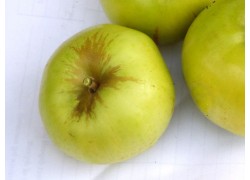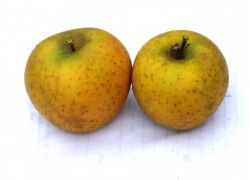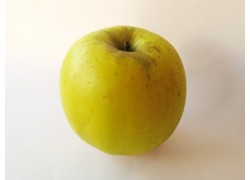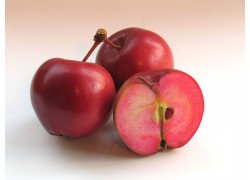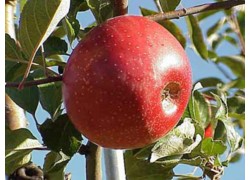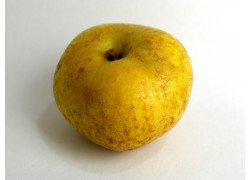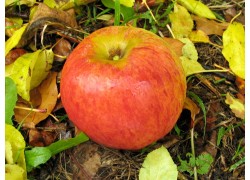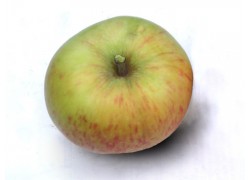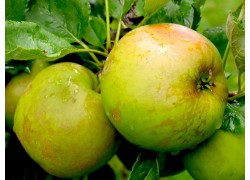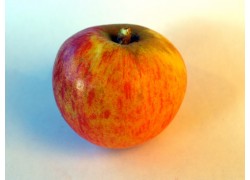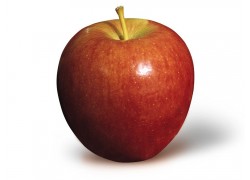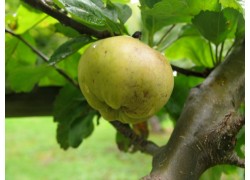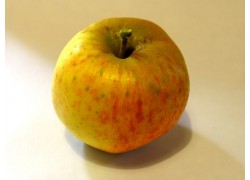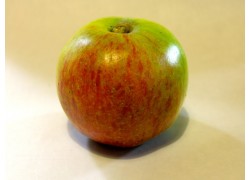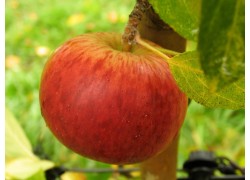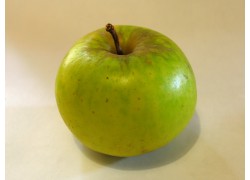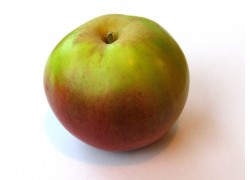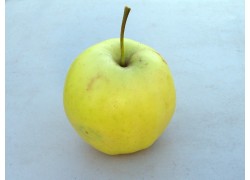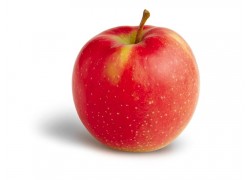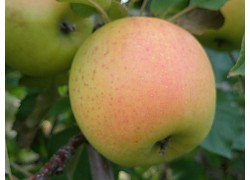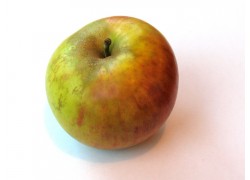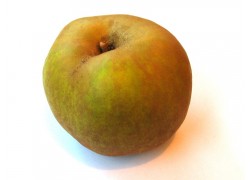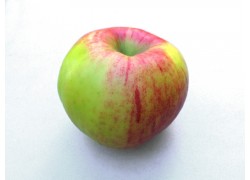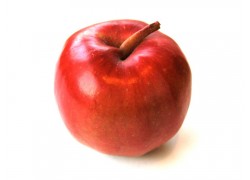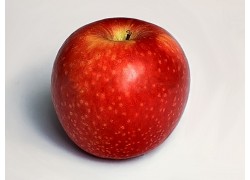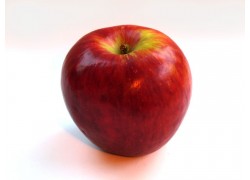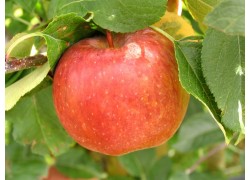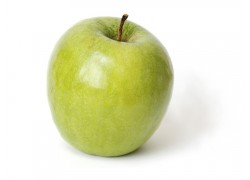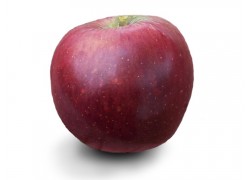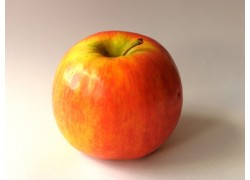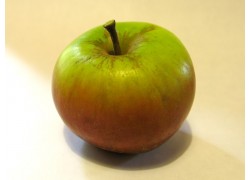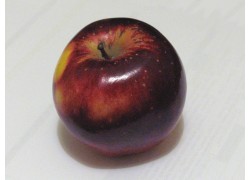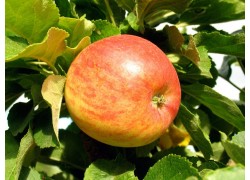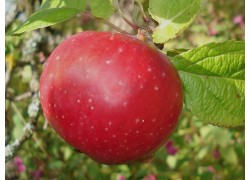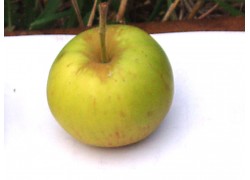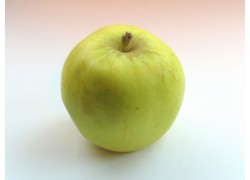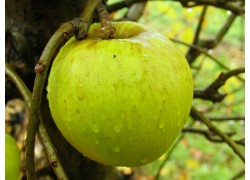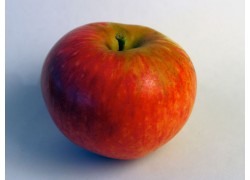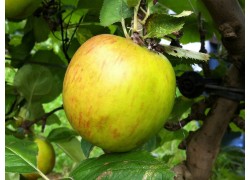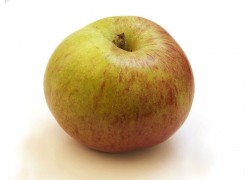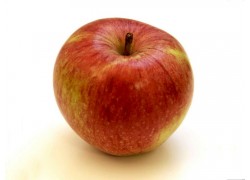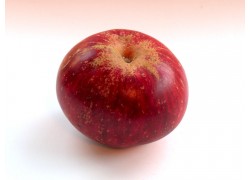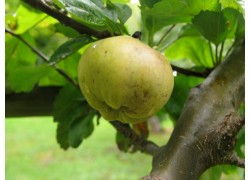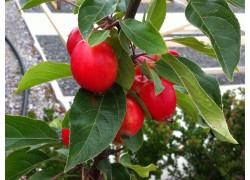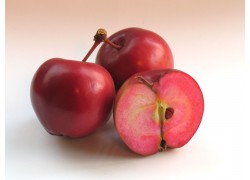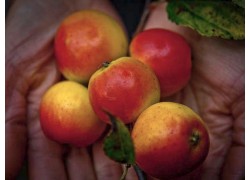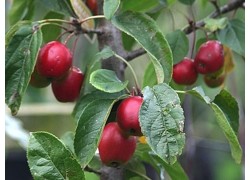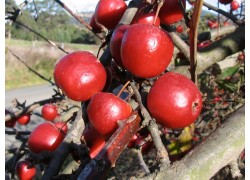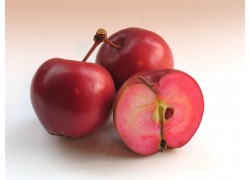No products
Filter
Our range of dwarfing and non-dwarfing fruit trees, nuts, berries.
Fruit Trees There are 256 products.
Subcategories
-
Dwarf Apples
Heritage apple varieties on DWARF rootstock. These apples are ideal for back yards, small orchards, espaliers or anywhere where space is tight. Varieties ripen from Christmas to July providing 6 months of fruit. Wee included some more recent varieties as well as historic ones. There are excellent eating apples, cookers, big, small, common and unusual. Something for every occasion.
-
Semi-dwarfing Apples
Heritage apple varieties on SEMI-DWARFING rootstock. These apples are ideal a free-standing tree, rather than espaliering. They are a little more vigorous than our dwarfing trees.
-
Stepover Apples
Step-over apple trees on EXTRA-DWARFING rootstocks. These highly sought-after trees can make productive hedges half a metre in height. Ideal for edging garden and vegetable beds, or a striking ornamental hedge. We tend to select later ripening varieties so that the fruit are hanging after the leaves have fallen. See our article on step-overs for more information.
-
Cider Apples
Cider apple trees on SEMI-DWARFING rootstocks. These are a selection of specialty cider varieties from the English and French cider traditions. They make superior cider (in the right hands!) and are to the cider world as to the Pinot Noir or Chardonnay are to the world of wine.
-
Crab Apples
Crab apple trees on SEMI-DWARFING rootstocks. These are considered as ornamentals, but can be used in juicing to offset the sweeter apple or pear. Highly regarded as pollinators for apple varieties because of their prolific flowering.
-
Dwarf Pears
Pear trees on DWARFING rootstocks. Dwarfing forms allow these pears to bear much earlier and make more manageable trees than the huge old pear trees seen on old farms. "Pears for your heirs" was the old adage pointing to their longevity, slowness of growth and bearing, and eventual large sized tree. The French (and Belgians) have been responsible for bringing pear culture to it's peak in the 1700s.
-
Perry Pears
Select from our range of Perry pears on Dwarfing rootstocks.
-
Cherries
Cherry trees on DWARFING rootstocks. The sweet cherry varieties we grow have been developed from the European bird cherry (Prunus avium), while the sour cherries (which are still tangy as well as sweet) have been developed from Prunus cerasus, a wild cherry from Asia. Cherries definitely need protection from birds and many growing methods have been developed to accommodate this eg. espalier, spanish bush or fans so that they can be netted.
-
Plums
Plum trees on NON-DWARFING rootstocks. The so-called European Plums we sell were introduced into Europe from Syria and Persia and are the product of long selection and development over the last 1000 years. Plums have pale greenish yellow flesh and rich sugary flavour, ripening in February. Generally two varieties are needed for cross pollination, although there are some that are self fertile. Esplaiering these shuold be done on a fan shape only.
-
Peach
Old style peaches on non-dwarfing rootstock. These are best grown as free-standing trees to 3-4m but can be espaliered in a FAN shape effectively keeping it below 1.8m.
-
Quinces
Quince trees on DWARFING rootstocks. Closely related to the pear, quinces are attractive trees, and the fruit wonderfully aromatic - treasured for cooking, tarts, preserves and jellies.
-
Nectarine
Old style Nectarines on non-dwarfing rootstock. These are best grown as free-standing trees to 3-4m but can be espaliered in a FAN shape effectively keeping it below 1.8m.
-
Apricots
Apricot trees on SEMI-DWARFING rootstocks. These are best grown as free-standing trees to 3-4m but can be espaliered in a FAN shape effectively keeping it below 1.8m. The Moorpark produces a smaller tree, and can be kept smaller on an espalier as well. Medlars produce small trees or can be espaliered easily to 1.5m.
-
Figs
Figs on non-dwarfing rootstocks. Knows for their sensuous fruit both fresh and dried. Figs like long hot summers but not too dry, with well drained soils, preferrably out of the wind. They tolerate being potted. -
Rootstocks
Rootstocks are used for grafting and budding onto. If you know or want to learn how to graft or bud, you can propagate yourself. This year we offer a handful of rootstocks, but sorry no quince or pears.
-
Berries
A selection of raspberries, blackberries, logans, blueberries, currants and other edible berries for the garden.
-
Nut Trees
Hazelnuts and almonds. Hazels are great for mass hedging, but can be trained into a small tree. Almond pollination can be tricky but this self-fertile one allows you to grow plenty with just one tree.
-
Dwarf Stone Fruit
Dwarfing Stone fruit - Peaches, Apricots, Plums, Nectarines. Idea for small espaliers or pots.
-
Egremont Russet Dwarfing Ripens: April - May
England's most important commercial russet variety, still grown commercially! Probably originated in England in the 1870's. It has a characteristic russet yellow skin, sometimes with a patch of red when ripe. A rich, crunchy flesh with an almost a nutty flavour. Keeps well.
$39.50 -
Five Crown Pippin Dwarfing Ripens: April - May
Also known as London Pippin, a medium sized apple, with skin yellowish green in colour, tending to an orange blush on the sunny side. The characteristic five ribs at the bottom of the fruit give it it's name. Known in Somerset, UK as early as 1580 referred to as 'Lounden Peppen', but seems to have been a popular variety in Australia at one time. Crunchy
$39.50 -
Golden Harvey Dwarfing Ripens: April - May
These bear tasty smallish apples, russeted with an orangey / red blush and yellow. The flesh is of rich aromatic flavour that intensifies as the fruit ripens. Tends to bear heavily. Most likely originating from Herefordshire UK in the 1600's.
$39.50 -
Grime's Golden Dwarfing Ripens: April - May
A smallish golden-green apple similar to a Golden delicious in colour who it's belived to be the parent of. Complete with the little flecks of russet and the russeted collar. It was found in West Virginia USA in 1804 by Thomas Grime, and being the parent of the Golden, makes this a truly historic apple. The flesh has a pleasant sweetness and a subtle...
$39.50 -
Huonville Crab Dwarfing Ripens: April - May
This quite a remarkable apple, with scarlet red flesh, covered by a scarlet red skin that shines up when polished. Small, palm-sized fruit, and a sweetness offset by a faint crab-apple tartness. The leaves are purple-green and the sap is red too. Quite amazing! The tree is quite vigorous and bears heavily. We discovered this tree as a seedling - a huge...
$39.50 -
Opalescent Dwarfing Ripens: April - May
This is probably the most strikingly picturesque apple we sell. It ripens to an iridescent glowing crimson on the tree and it's taste is rich and sweet. Fruit can be medium to large in size. A fine all-round apple of American origin - great juiced, cooks superbly as well as eaten fresh. Hangs well on the tree without losing much quality.
$39.50 -
Reinette Du Canada Dwarfing Ripens: April - May
A true historic apple from the 1600's. Flattish in shape and russet, it has a coarse but richly aromatic flesh. Great eaten fresh and despite it's name is very French. Also known as Reinette d'Orleans and Reinette d'Angletere.
$39.50 -
Stayman's Winesap Dwarfing Ripens: April - May
An improvement on its parent Winesap, this old American variety originates from Kansas in the 1850's. It matures late and traditionally was an apple prized for being able to store through the winter. It's got an aromatic and distinctive pleasing vinous flavour.
$39.50 -
Upton Pyne Dwarfing Ripens: April - May
An apple from near Exeter, UK about 1910. Extremely juicy. We find it has an intriguing unique sweet slightly resinous flavour. Ripens in high season here about early April. Fairly large in size, pink and red striped skin over a yellow background with firm white aromatic flesh. An unknown apple but definitely worth preserving.
$39.50 -
Belle De Boskoop Dwarfing Ripens: May - June
Originating in the town of Boskoop, Holland in the 1850's, this apple is fondly remembered by many Europeans. An apple with distinct character it has orange/red russet skin with a firm flesh that is creamy and fully flavoured almost tart when picked but mellows and sweetens after harvest. Excellent eaten, cooked (holds it's flesh) and stores well....
$39.50 -
Bess Pool Dwarfing Ripens: May - June
An English apple, named after Bess who found this growing wild in Nottinghamshire around 1820. Late and good keeping dessert apple, with a sharp flavour though sweet when ripe. Striped and flushed scarlet over green skin. Flowers very late with Court Pendu Plat.
$39.50 -
Braeburn Dwarfing Ripens: May - June
A NZ apple of high quality and flavour, maturing late. One of the crispest with juicy flesh and a nice sweet/tart balance. The fruit are quite long and blocky in shape with attractive red stripes on a yellow background. Braeburn has become a very popular commercial apple in the UK. Suitable for low-chill conditions.
$39.50 -
Calville Blanc D'Hiver Dwarfing Ripens: May - June
Prized in the kitchen - famous for making delicious 'tartes aux pommes' as it holds its shape when cooked. Under an irregular yellowish russeted skin, it has an appealing aromatic flesh that is wonderful eaten fresh and excellent for making cider. A true historic apple dating back to the 1600's in Normandy, France.
$39.50 -
Cornish Aromatic Dwarfing Ripens: May - June
A handsome old English apple from Cornwall discovered in 1813. High quality eating apple, quite squat in shape with yellow flushed, red skin with occasional russet patches. The flesh is firm, yellow and when caught at its peak of ripeness has a wonderfully aromatic flavour with a hint of anise. Ripens here in early May.
$39.50 -
Court Pendu Plat Dwarfing Ripens: May - June
This is considered the oldest apple known, introduced into Europe in Roman times. Small in size, yellow skin flushed with orange and red, sometimes russet. Brisk acid flavour when first picked, mellowing to sweet and fully flavoured as it matures. Flowers late (avoids frost) and just superb considering it's about 1500 years old!
$39.50 -
Crofton Red Dwarfing Ripens: May - June
An attractive small apple with skin red and orange stripes over a green background. The flesh is white, with good crunch, and stores very well. Good size for a lunchbox. Developed by Joseph Cato in the Hobart / Cygnet area in the 1830's
$39.50 -
Freyberg Dwarfing Ripens: April
An amazing apple, drawing qualities from both it's parents - Golden Delicious and Cox's Orange Pippin. So it's easy to see why is so widely enjoyed. Medium sized fruit, the skin a lovely greenish yellow and has the tiny russet fleck similar to a Golden. It ripens midseason and hangs well on the tree.
$39.50 -
Ida Red Dwarfing Ripens: May - June
A very handsome late ripening, deep red apple - a cross between Jonathan and Wagener from Idaho USA in 1942. Crisp flesh and an uncomplicated sweet / acid tasting flesh. Great cooked as well as eaten fresh and stores exceptionally well.
$39.50 -
Jim Reilly Dwarfing Ripens: May - June
It looks like one of it's parents is Golden Delicious (as are Pink Lady, Freyberg, Gala and Jonagold). It is a large, handsome apple with green to gold skin with more zing than a Golden, making it an outstanding eating apple. We can't track down who Jim Reilly is but we think he's done pretty well.
$39.50 -
Jonagold Dwarfing Ripens: May - June
A cross between Golden Delicious and Jonathan, Jonagold grows medium to large red fruit of intense flavour. The creamy yellow flesh is light, terrifically crunchy and memorably juicy. Solid Red skin with some yellow tones, and maybe a little stripe. Creamy The flavour has the tantalising taste of both parents. Ripens quite late and excellent keeper. If...
$39.50 -
Mutsu Semi-Dwarfing Ripens: May - June
Fruit tend to be green all over, medium to large in size and very heavy regular cropping. Mutsu originated in Japan in the 1940's, an offspring of Golden Delicious. The flesh is crunch and extremely juicy with a sprightly (some say fruit salad) flavour that's unique. An apple that seems to satisfy all tastes, as we're always getting good feedback about it...
$39.50 -
Prinzenapfel Dwarfing Ripens: May - June
Literally translates 'Apple of the Prince' but known by many other Germanic names, widely grown in Europe. It has a characteristic long shape, orange/red in colour with rich dense aromatic flesh. Keeps well.
$39.50 -
Reinette Dorée Dwarfing Ripens: March - April
Also called Golden Reinette, one of Europe's most famous old apples, as far back as the 1600's. It ripens fairly late, has a russeted skin and dense aromatic flesh. Used for both eating and cooking, Reinette dorée was typically one of those apples cellared to be used from Christmas onward through an European winter.
$39.50 -
Rome Beauty Dwarfing Ripens: May - June
Rome produces large brilliant glossy red fruit that resists bruising and is a heavy cropper. Good eating and becomes very sweet the riper it gets. Originating on the northern bank of the Ohio River in a town called Rome in the early 1800's where it appeared from a sucker below the graft of an orchard tree. Was grown commercially for some time in the USA and
$39.50 -
Splendour Dwarfing Ripens: May - June
Large and blocky in shape and orange-red to dark red in colour it has yellowish white very crisp flesh, sweet yet subacid. Like Freyberg and Braeburn, another excellent NZ apple. Ripens late but hangs and stores well.
$39.50 -
Sundowner Dwarfing Ripens: May - June
Large red fruit striped with yellow and juicy, sweet flesh. Originating in Western Australia, 1973 by John Cripps, this is a cross between a Golden Delicious and Lady Williams. That makes it the sister to Pink Lady. A very palatable and successful Australian apple. Suitable for low-chill climates.
$39.50 -
Democrat Black Dwarfing Ripens: June - July
The Dark Red (black) form of Democrat. For a long time Tasmania's mainstay export apple up until the 1980's, of a cannonball consistency and excellent keeping qualities. When left to fully ripen on the tree they are a great eating apple. Brilliant red skin and a crunchy flesh. Quite a sight when all the leaves have fallen and the red orbs are still...
$39.50 -
Fuji Dwarfing Ripens: June - July
A well known variety developed in Japan from it's parent Red Delicious. An attractive red skin, crisp yellowish flesh, uncomplicated deep sweet flavour and is always predictably juicy. Medium to large sized fruit. Fuji stores well - improving in quality and flavour. A thoroughly modern apple, and one of the latest maturing varieties. Suitable for...
$39.50 -
Granny Smith Dwarfing Ripens: June - July
This famous apple originated as a chance seedling in the back garden of a Mrs. Mary Anne Smith of Ryde near Sydney around 1860. It's thought to be the offspring of a variety called 'French Crab' which it closely resembles. Granny's are large and very green with prominent dots on the skin. The white flesh is very crisp, juicy and acid. Unfortunately the...
$39.50 -
Lady Williams Dwarfing Ripens: June - July
This is a true Australian Federation apple believed to be the daughter of Rokewood and Granny Smith both of which are famous old Australian varieties. It is a large apple, maturing July or even later and keeps extremely well. Brilliant red purple skin, longish conical fruit with excellent flavour. Tree very vigorous and upright. This variety originated in...
$39.50 -
Pink Lady Dwarfing Ripens: June - July
Most people will know Pink Lady because of it's popularity Australia wide. It's has fairly large fruit with excellent appearance, pink to pale red blush over a yellow background. Nicely flavoured pale yellow firm flesh. Matures very late and stores very well. Presently Australia's most famous apple: 3rd generation Australian, starting from Rokewood -->...
$39.50 -
Sturmer Dwarfing Ripens: June - July
Feedback from our customers rates Sturmer as one of the most satisfying apples to grow. It's extremely late, very acid, and is really a great all rounder - eaten fresh, cooked, juiced or made into cider. By modern standards it's no beauty; with orange/yellow russeted skin, a dense yellowish flesh, and medium in size. It's a very heavy cropper and stores...
$39.50 -
Duke Of Clarence Dwarfing Ripens: June - July
Once widely grown apple in the Tasmanian apple industry in the 1950's but there is little mention of this variety in the literature. An dark burgundy skin over green when ripe, these medium sized beauties polish to a high gloss. Pale to cream flesh, has an outstanding sweet flavour. So good that we thought it worth re-introducing this apple again.
$39.50 -
Breakwell's Seedling Ripens: February
A bright red apple with a stripe, small to medium fruit. Heavy cropper. Bitter-sharp. Propagated by George Breakwell in Monmouth, Wales.
$39.50 -
Improved Foxwhelp Ripens: February
Another well known variety developed by Bulmer's in Hereford, UK. Very bitter-sharp. A vigorous tree with lots of lovely pinkish/red apples, crops consistently and gives an acidic and sweet juice. Useful for blending.
$39.50 -
Antoinette Ripens: March
A French cider variety, green with a orange red stripy cheek. Small to medium fruit. Bitter-sweet.
$39.50 -
Blanchette Ripens: March
A French cider variety. Medium sized deep yellowy green fruit, with a faint collar of russet. Tart (aigre).
$39.50 -
Bulmer's Norman Ripens: March
Famously developed by Bulmers in Hereford, UK. Bitter-sweet. A very vigorous tree, produces good crops of medium sized green apples, has lots of strong tannins so makes a good juice for blending.
$39.50 -
Somerset Redstreak Ripens: March
A bright red apple with a stripe, plus some russet. From Somerset, UK. Bitter-sweet.
$39.50 -
Clozette Ripens: April
A French cider variety, green with occasional red stripe over it, plus some fine russet. Also a wonderful eating apple. Medium sized fruit. Bitter-sweet.
$39.50 -
Dabinette Ripens: April
A medium sized flattish red apple. Bitter-sweet. Originated in Somerset, UK. Late harvest, has been use to make single variety cider. Considered self fertile.
$39.50 -
Yarlington Mill Ripens: April
A strong growing tree, beautiful elongated pink/yellow apples and the juice is rich with lots of good tannins, sugars and acidity, a very good cider apple, tends to be biannual.
$39.50 -
Kingston Black Ripens: April
A dark red almost black coloured apple that makes passable single-variety cider. Bitter-sharp. Originated in Kingston, Somerset UK. Mid to late harvest. Thought by some to be the perfect cider variety. Needs high chill to set fruit.
$39.50 -
Calville Blanc D'Hiver Semi-Dwarfing Ripens: May - June
Apart from being a famous culinary apple, it's well known for making excellent cider. Sharp. Dating back to the 1600's in Normandy, France. Under an irregular yellowish russeted skin, it has an appealing aromatic flesh. Tip-bearing. Needs pollination from other varieties.
$39.50 -
John Downie Ripens: June - July
A crab apple originating in the UK. Grows to a largish tree and bears ridiculously heavy crops of acid but quite acceptably edible crabs. Longish in shape and striped orange when ripe. This is the one for crab apple jelly.
$39.50 -
Huonville Crab Semi-dwarfing Ripens: April - May
This quite a remarkable apple, with scarlet red flesh, covered by a scarlet red skin that shines up when pollished. Small, palm-sized fruit, and a sweetnes offset by a faint crab-apple tartness. The leaves are purple-green and the sap is red too. Quite amazing! The tree is quite vigorous and bears heavily.We discovered this tree as a seedling - a huge old...
$39.50 -
Wychwood Crab Ripens: April - May
A seedling of a famous UK crab apple 'Golden Hornet', this spectacular crab originated at Wychwood, Mole Creek, Tasmania. It's literally covered in bright yellow crabs about the size of a 20c piece.
$39.50 -
Jack Humm Ripens: June - July
This is actually a cross between Gorgeous and John Downie crab apples. Clusters of bantam egg sized bright crimson crabs, excellent for jellies and a great addition (for a bit of a zing) to fresh juice and cider.
$39.50 -
Ranelagh Crab Ripens: June - August
This is a distinctive, extremely late ripening crab discovered by us. The bantam egg sized crabs deep red in colour literally weigh down the branches with the weight of fruit and look great well after the trees have lost their leaves. Their fruits are highly acid but finally become quite tasty in late August. Children seem to really go for them.
$29.50 -
Huonville Crab Step-Over Ripens: April - May
This quite a remarkable apple, with scarlet red flesh, covered by a scarlet red skin that shines up when pollished. Small, palm-sized fruit, and a sweetnes offset by a faint crab-apple tartness. The leaves are purple-green and the sap is red too. Quite amazing! The tree is quite vigorous and bears heavily. We discovered this tree as a seedling - a huge...
$42.50
